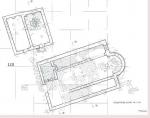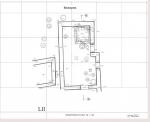Summary (English)
EXPLORATIONS NEAR BYALA (Valeri Yotov – valeri.yotov@gmail.com, Alexander Minchev) Twenty four ritual pits were explored under the church, containing fragmentary amphorae from the 6th to 3rd centuries BC (from Lesbos, Klazomenai, Chios, Heraclea Pontica, Thasos, Mende, Rhode and Kos, including seven stamps from Heraclea Pontica of 400 – 340 BC), East Greek cups and Attic black-gloss and red-figure pottery (skyphoi, kylikes, dishes and a lid of lekane) of the 5th – first half of the 4th centuries BC, Thracian pottery (ichthyai, kraters, bowls, pots and cups), fragmentary roof tiles and coins of the 5th – 2nd centuries BC. The church was a three-nave single-apse basilica with a narthex, 22.50 m long and 14 m wide, built of cut stones with bricks that were used to level the courses. Two occupation periods were documented with two apses and two floors paved with bricks, respectively. The columns separating the nave from the aisles had Corinthian capitals. During the first occupation period the narthex had an entrance towards the northern aisle, which was later closed with a conch, while the northern part of the narthex was transformed into a chapel. A baptistery, shaped as a circular pool with steps from the east and the west, was discovered under the level of the floor paved with bricks. During the excavations, fragmentary frescoes were found, some of them showing flowers in green and red, an image of a saint (or young Jesus Christ) and parts of Latin inscriptions. A path paved with stone slabs was discovered to the west of the entrance of the church, leading towards a building with several rooms, one of them accommodating a cross-like baptistery with marble veneer that was used during the second occupation period. The church was built at the end of the 4th or the first half of the 5th century AD. The second occupation period dated to the second half of the 5th – the beginning of the 6th centuries AD. The latest coins belonged to Heraclius minted in AD 613 – 614/615. The basilica was destroyed in AD 614 during the invasion of the Avars and the Slavs. Two buildings of the 5th – 6th centuries AD were discovered to the northwest of the church, one of them accommodating a wine press, 3 m by 3 m in size.
- Valeri Yotov - Regional Museum of History – Varna
- Alexander Minchev - Regional Museum of History – Varna
Director
Team
Research Body
- Regional Museum of History - Varna






![Download [PDF]](/excavation/skins/fasti/images/results/download_sml.png)

